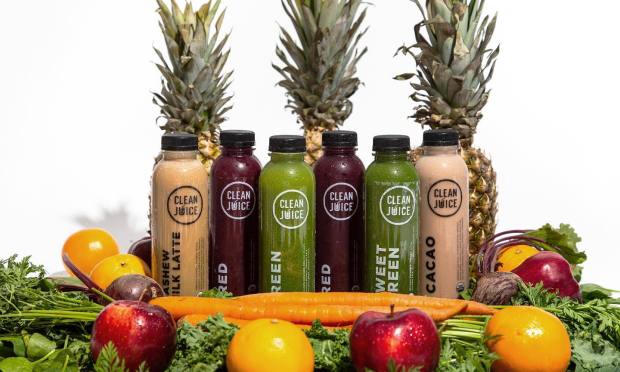The Key Features That Helped Clean Juice Keep Sales Flowing

Quick-service restaurants (QSRs) realize that yesterday’s mobile apps no longer cut it. In the Order To Eat Tracker, Clean Juice CEO Landon Eckles explains why integrating loyalty programs into the mobile ordering and payment experience is now the new baseline.
 Food isn’t the only thing quick-service restaurants (QSRs) have delivered since the pandemic swept the globe early last year. The restaurant sector’s investments in contactless technologies have provided consumers with convenient and flexible ordering, payments, pickup, delivery and rewards offerings to boost customer conversion as well as vitality.
Food isn’t the only thing quick-service restaurants (QSRs) have delivered since the pandemic swept the globe early last year. The restaurant sector’s investments in contactless technologies have provided consumers with convenient and flexible ordering, payments, pickup, delivery and rewards offerings to boost customer conversion as well as vitality.
Organic juice bar Clean Juice, which has franchise locations in 26 states expanded its tech menu offerings to make ordering, payments and delivery more seamless. The QSR, founded by married team Landon and Kat Eckles in 2016, offers plant-based food and drinks including organic cold-pressed juices, smoothies, wraps and salad bowls.
Clean Juice contracted with a New York-based software firm last summer to overhaul its four-year-old branded mobile app. CEO Landon Eckles told PYMNTS in a recent interview that the redesign has led to an improvement in sales.
“We didn’t want a cookie-cutter app,” he said. “We wanted our menu beautifully displayed, [with] the ability for our guests to not only order Clean Juice to be picked up from the store but [also to] get delivery through DoorDash, make seamless payments, access our loyalty program, order catering, learn about the benefits of eating organic and [listen to] our podcast.”
Meeting Demand For Off-Premises Dining
Consumers downloaded the app more than 72,000 times within one month of its debut. Sales equaled or surpassed levels generated by the previous platform, the company reported, and dozens of delivery orders were placed each day with an average tab of $45. The new and improved app has increased digital orders by nearly one-third, up from 10 percent prior to the pandemic, Eckles said.
“Before [the pandemic], we had started the process of developing a new app for our company,” he said. “Since [the pandemic began], I would say we made a big shift to digital, for sure.”
Eckles credited the rise in revenues to a combination of the company’s revamped app and customers’ desire for off-premises dining alternatives.
“I think people were looking for more digital options,” he said. “I think our new app is ten times better in terms of its functionality for the guests.”
Customers can order ahead, pick up their purchases in the store or curbside, or have orders delivered through third-party delivery services such as Uber Eats, Grubhub and DoorDash, partnerships the company formed prior to the pandemic in December 2019. Same-store sales increased compared to the previous summer after the app launched in June, Eckles added.
App implementation ran into a few challenges, he said. When Clean Juice updated its seasonal menu, diners were unable to order any of those items through its app, for example.
“When you’re not allowing guests to order what they want, and they have to tell you, that’s not good for business,” he said. “I don’t know the technical [details of] how it was fixed, but the connectivity was corrected.”
Rewards Program Plans
One thing that hasn’t changed within the last year is the QSR’s Clean Juice rewards program, through which customers can earn one point for every dollar spent. When patrons reach 2,500 points in a year, they achieve Very Important Guest status and are given a box of swag items and enhanced birthday rewards in return for their loyalty.
A new rewards program is in the works that will leverage customer data gathered through the app to help improve personalization, according to Eckles.
“It’s in the pipeline, but it’s not something we have available right now,” he said. “We are going to make it so that customers can use the point system to get things they want.”
Clean Juice, like many QSRs, took a hit from March through May 2020 as diners hunkered down at home and slowed their spending. Sales fell by half compared to the same three-month period in 2019.
“Those were tough months. Everybody was shell-shocked,” Eckles said. “I think the quarantine caused people to be scared to go out. Many of our stores had to temporarily close because we couldn’t find labor. We shortened hours and had to do a lot just to survive in those three months.”
Thankfully for Clean Juice, the company had the foresight to respond quickly to demand for flexible features that let consumers order how they want in a safe, convenient and speedy manner. Engaging customers with the latest trends and technology may not guarantee success, but it will likely continue to be an essential tonic for QSRs looking to stay relevant and healthy in a fiercely competitive industry.
